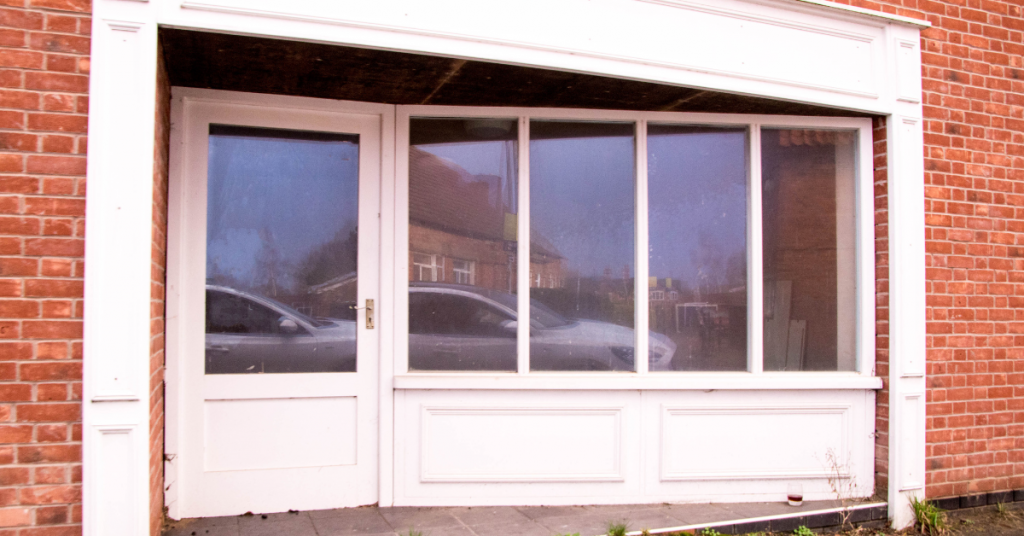9 Easy Tips for Shop Front Design
Your shop front is one of the most important aspects of your business. It is the first thing customers see and it can make or break their decision to come inside. Here are nine tips to help you design the perfect shop front:
- Respect the character of the building
- Consider the local character of the area
- Conserve historic or existing features
- Have a clear identity
- Choose colours wisely
- Use symmetry and rhythm, considering upper floors
- Ensure the entrance is clearly defined
- Use high quality materials and craftsmanship
- Integrate signage and lighting into the overall design concept

Respect the character of the building & neighbouring properties
When designing your shop front, it is important to respect the character of the building. You want to create a design that is complementary to the building and its surroundings.
You want to avoid anything that clashes or overpowers the original character of the building, and always be mindful of the scale of your shop in relation to the other buildings around it.
A shop front should not be designed in a way that makes it difficult to identify the business it belongs to. You also want to avoid creating a design that is too similar to your neighbours, as this can create confusion for customers.
Consider the local character of the area
When designing your shop front, it is important to consider the local character of the area. You want to create a design that is in line with the style of the neighbourhood and that will be welcomed by the community.
You may also want to consider the demographics of the area and what type of shop would be most appealing to them.
Many local councils have guidelines around the styles of shop front that can be used in certain areas to ensure that visitors have a positive and consistent experience when walking around different shopping and neighbourhood districts.
Conserve historic or existing features
When designing your shop front, it is important to consider the historic or existing features of the building. You want to create a design that complements these features and does not overshadow them.
You may also want to consider retaining some of the original features of the building, such as the facade or the windows.
Conservation areas require you to take a heritage or traditional approach to shop front design so that the original features are preserved or replicated, and working with experienced shop designers and builders will make sure your shop front adheres to the local government’s guidelines and legislation around improvements.
Have a clear shop identity
When designing your shop front, it is important to create a clear shop identity. This means having a design that is unique and easily recognisable to your brand.
You want to make sure that customers can identify your shop from a distance, and that your shop front design gives an indication of the type of business you are.
This can be achieved by incorporating your logo and business name in your signage alongside the colours of your brand and the architectural features of your shop’s structural design.
Choose Colours Wisely
When choosing colours for your shop front, it is important to consider the type of business you have and how your shop front is going to reflect your overall brand.
You want to choose colours that will attract customers and make them feel comfortable.
Bright and bold colours may work well for a shop that sells clothes or cosmetics, but they may not be as effective for a shop that sells furniture or appliances. It is important to consider the target market and what type of impression you want to give them.
Use symmetry and rhythm, considering upper floors
When designing your shop front, it is important to consider how it will look from upper floors.
You want to create a design that is balanced and visually appealing. You may want to use symmetry and rhythm to create a visual harmony.
You also want to make sure that the shop front is in proportion with the building and that it does not look disjointed from the rest of the building.
Ensure the entrance is clearly defined
One of the most important things to consider when designing your shop front is the entrance. You want to make sure that it is clearly defined and easy to find.
You should also make sure that it is inviting and that customers feel comfortable coming in. You may want to use a welcoming colour like yellow or put up a sign that says “Welcome” to make customers feel welcome.
Make sure it is easy to navigate
Another important thing to keep in mind when designing your shop front is the layout. You want to make sure that it is easy for customers to navigate and find what they are looking for. You may want to use a simple layout with clear signage and a logical flow.
Use high quality materials and craftsmanship
When designing your shop front, it is important to use high quality materials and craftsmanship.
This will ensure that the shop front is durable and looks professional.
Using a material like aluminium or toughened glass will give you a contemporary and modern aesthetic while ensuring your shop front is durable and weather-resistant. Using timber requires a specialist treatment process so that it lasts for many years.
Details like your shop front’s joints and architectural finishes can make or break your project and if you work with an inexperienced shop fitter, these details can be the difference between replacing your shop front in 5 years or 25 years.
All of the joints need to be properly sealed and finished, and your shop front needs to have the correct finishes applied to the materials to avoid corrosion, decay, or damage being an issue down the line.
If you are working with a limited budget, it is important to focus on the essentials. This means that you may have to forgo some of the more expensive elements of shop front design, such as signage and lighting. Instead, focus on creating a visually appealing shop front using simpler materials and finishes.
Integrate signage and lighting into the overall design concept
Your signage is another important aspect of your shop front. It is the first thing customers see and it can either entice them to come inside or deter them from entering. Make sure your signage
When it comes to signage and lighting, it is important to integrate them into the overall design concept. This will ensure that they look cohesive and professional. You may want to use the same type of materials and finishes for both elements to create a unified look. You should also make sure that the signage and lighting are in proportion with the shop front
The facade of your shop can make or break your business
The design and layout of the shop may determine whether customers come in to browse, buy something they need on a whim, or leave without buying anything at all. If you want to increase sales from the store front, it is important for you to consider how the customer will experience their time in your shop.
These tips will help you to design the perfect shop front that will attract customers and encourage them to come inside.
If you need any help or support when it comes to designing, building, and installing your shop front, London Shop Fronts has been providing expert end-to-end support in this industry for decades.
Get in touch with us today for a free consultation.

Most Popular Types of Commercial Door
Choosing the best commercial door for your property will depend on a range of factors, including the type of building, the type of business, your budget and more.

How Curtain Walling Can Improve Your Energy Efficiency
How Curtain Walling Can Improve Your Energy Efficiency by up to 30% There are many benefits to using curtain walling for your business. Perhaps the most obvious

How to Increase Foot Traffic to Your Shop Front: Make a Great First Impression
How to Increase Foot Traffic to Your Shop Front: Make a Great First Impression When it comes to growing your business, you need to think

Everything You Need to Know About Commercial Planning Permission for Shop Fronts
Everything You Need to Know About Commercial Planning Permission for Shop Fronts If you want to make changes to your shop front, you will need
